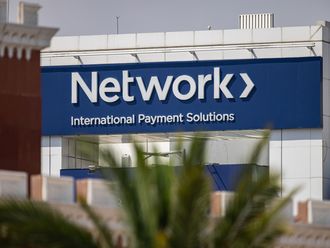Dubai: First Abu Dhabi Bank (FAB) reported on Monday a 16 per cent jump in its net profits for the third quarter of 2018 on the back of investment income gains and declines in impairment costs.
The bank’s profits reached Dh3.02 billion in the quarter compared to Dh2.6 billion in the third quarter of 2017. This puts its net profit in the first nine months of 2018 at Dh9.08 billion, up 12 per cent year-on-year.
Profits for the quarter are above market expectations, with forecasts from SICO Bahrain pointing to Dh2.87 billion in net profit. The rise in earnings came as FAB’s FX and investment income rose by 50 per cent in the third quarter of this year to reach Dh738 million, while impairment charges fell 23 per cent year-on-year during the quarter.
The drop in impairment costs came even as the ratio of non-performing loans to total loans inched up to 3.1 per cent at the end of September 2018 from 3 per cent last year.
Abdul Hamid Saeed, FAB’s group chief executive officer, said that going forward, the bank plans to “take advantage of growth opportunities abroad,” highlighting expansion plans in Saudi Arabia.
“In Saudi Arabia, we have completed our first debt capital markets transaction through our investment-banking franchise and we will be launching our commercial banking activities during the current quarter,” he said.
FAB has already received a license for commercial banking activities in Saudi Arabia earlier this year, as well as a license for investment banking. This came amid a spike in interest in investing in Saudi Arabia among financial services firms as the kingdom prepares to see its main bourse index upgraded to Emerging Market status by the MSCI in June 2019.
“In addition, we continue to grow our personal and corporate banking offerings in Egypt. We are confident that our expansion plans will enhance our regional presence and provide an important contribution to the group and region for years to come,” FAB’s Saeed said.
Away from expansion plans, FAB’s balance-sheet saw gains in both loans and deposits. Net loans and advances reached Dh354 billion, up 8 per cent year-on-year, led by what FAB described as “sustained momentum in corporate and investment banking.”
Customer deposits also jumped by 20 per cent to reach Dh455 billion at the end of September 2018, driven by “significant short-term deposit inflows from the government.”
On the income statement, the bank’s total operating income went up 5 per cent to Dh4.8 billion in third quarter of 2018 from Dh4.6 billion in the same period last year. This put total income in the first nine months at Dh14.6 billion, up 1 per cent year-on-year.
Meanwhile, FAB’s cost of risk also fell by 17 basis points year-on-year.
FAB was created through the merger of the National Bank of Abu Dhabi and First Gulf Bank, with the merger effective as of April 2017. The bank said on Monday in its report that integration for the merger is still underway, with systems integration on track to be completed by the end of 2018.












